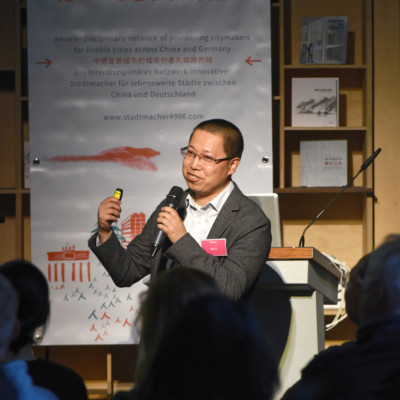YANG Fan, what is the city of Wuhan’s cultural heritage?
The largest city in central China, Wuhan has over 5,000 years of history. It was actually three cities (Wuchang, Hankow, Hanyang) that merged in 1927 to become an interim national capital. After a long period of political turmoil, most of Wuhan’s ancient buildings disappeared. However, most of the historical buildings in the Hankow concessions remained. The cultural value of these buildings was ignored. They were regarded as symbols of the humiliation of foreign invasion. For a very long time, there were no regulations to protect the buildings’ architectural integrity. Many were in such bad condition that that they are now called “shantytowns” (棚户区). Since the end of the Cultural Revolution in the late 1970s, a movement to protect these buildings as cultural heritage has grown. The government is becoming aware of the value of these buildings for boosting the city’s appeal. The real estate industry is also driving a gentrification movement. Because of their premium locations, many shantytowns have been bulldozed to make way for new buildings. The remaining buildings were so heavily renovated or “beautified” that their historical authenticity was tarnished. This is the greater challenge faced by the buildings and areas of Wuhan that are part of its cultural heritage. It must be addressed immediately to prevent massive scale “cosmetic surgery” on most of Wuhan’s cultural heritage.
What is the relevance of cultural heritage in Wuhan – to you, the residents of Wuhan and the city’s government?
Cultural heritage in Wuhan is evidence of the past and a signpost to the future. It would be horrible to live in a city with no trace of the past. The way cultural heritage is treated shows the way to treat humanity. Wuhan’s government regards cultural heritage as one of the city’s important assets and wants to leverage it to make the city more attractive. It also wants to use cultural heritage as a tool for boosting the real estate and creative industries. But it has a strong political orientation and typically lacks experience in managing cultural heritage in a useful way for the market or international actors.
Former German Concession: What is the current situation? The German Concession in Wuhan was the target of large-scale bombing in 1944. Many buildings were destroyed. Interestingly, the former German Consulate General building is probably the best preserved of its kind in Hankow, as it is now the seat of the Wuhan municipal government.
Your wish and suggestion for the Sino-German cooperation?
I think the greatest value of cooperation with Germany and CITYMAKERS China – Germany is that we can learn from your view of cultural heritage. Especially in how public opinion is respected and how NGOs and civil societies can be an important factor. It is really driven by individuals and organizations of free will. I do believe that this is the best way to protect our true heritage. I hope in the future we can keep up the good work, as CECP has volunteers across China now. My wishes are:
1. To expand the project to other cities like Qingdao, Jinan with rich German heritage;
2. Start developing an online platform so we can use the internet to connect people and facilitate information sharing;
3. We hope to have more German volunteers join this project, or even come to China to work with us.
Yang Fan has a Master of Science from the National University of Singapore, and is a PHD candidate in Economics at Wuhan University. He is the founder of CECP – China Endangered Culture Protectors, which is one of the most international grass root NGOs in China with currently about 4000 volunteers out of which one fourth are international citizens.
Contact
cecporg@126.com
CECP




